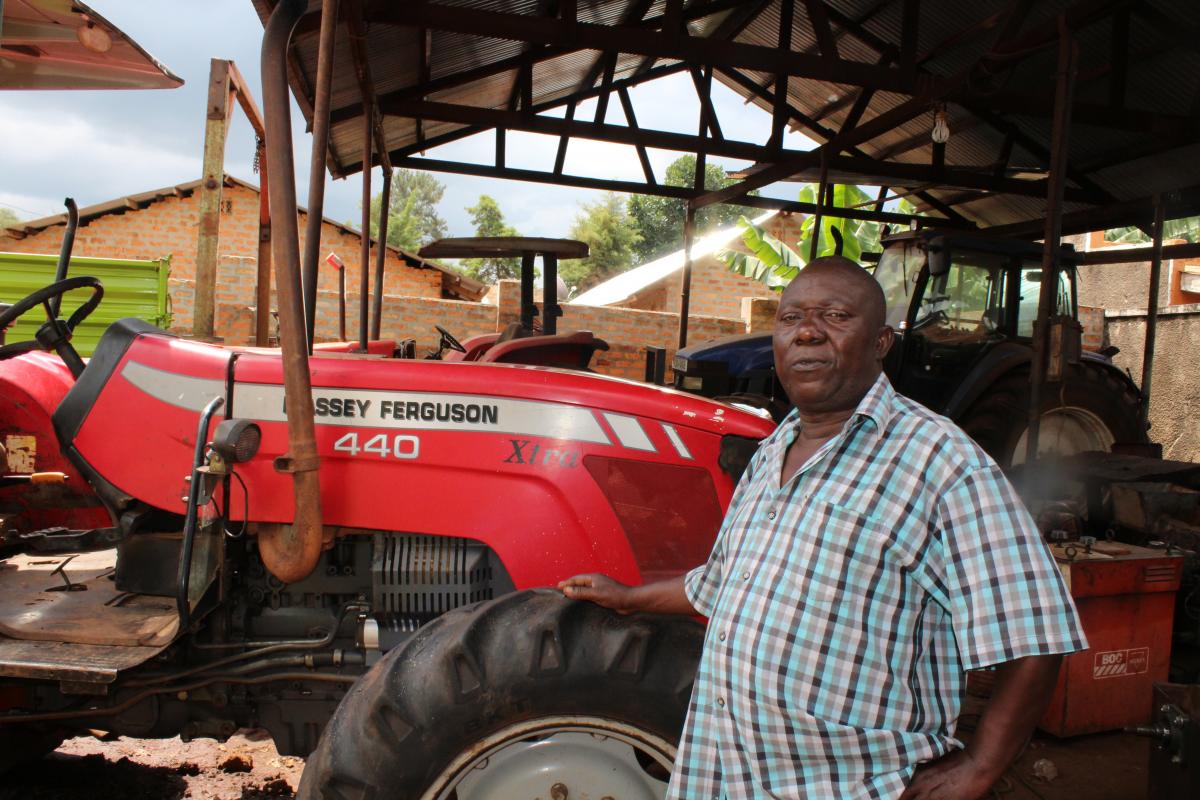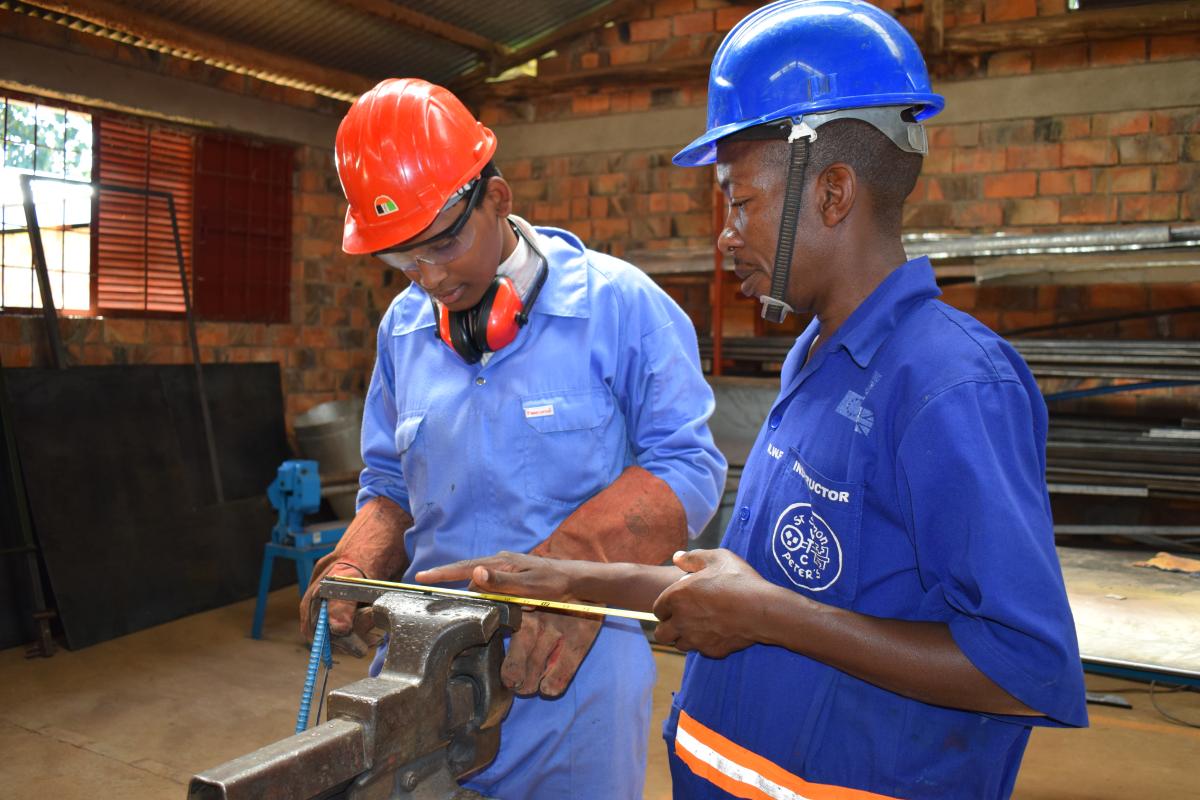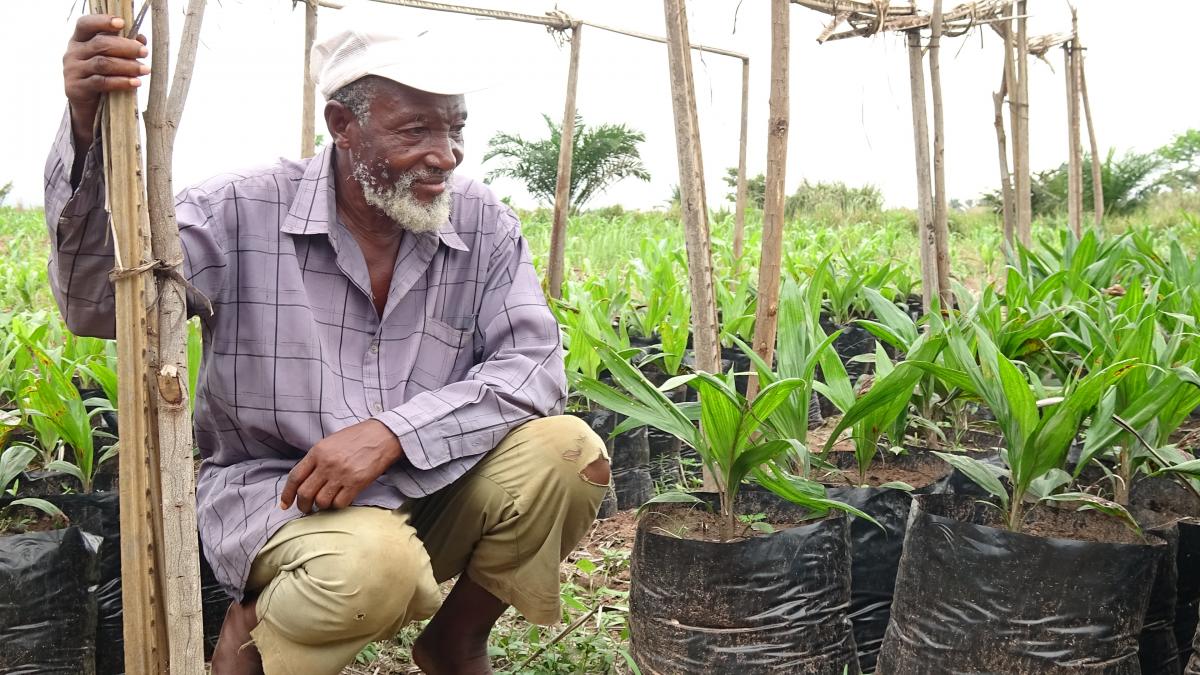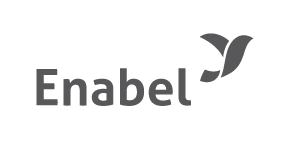Opzoeken
2610 - 2625 van 3051 nieuws bekijken
-
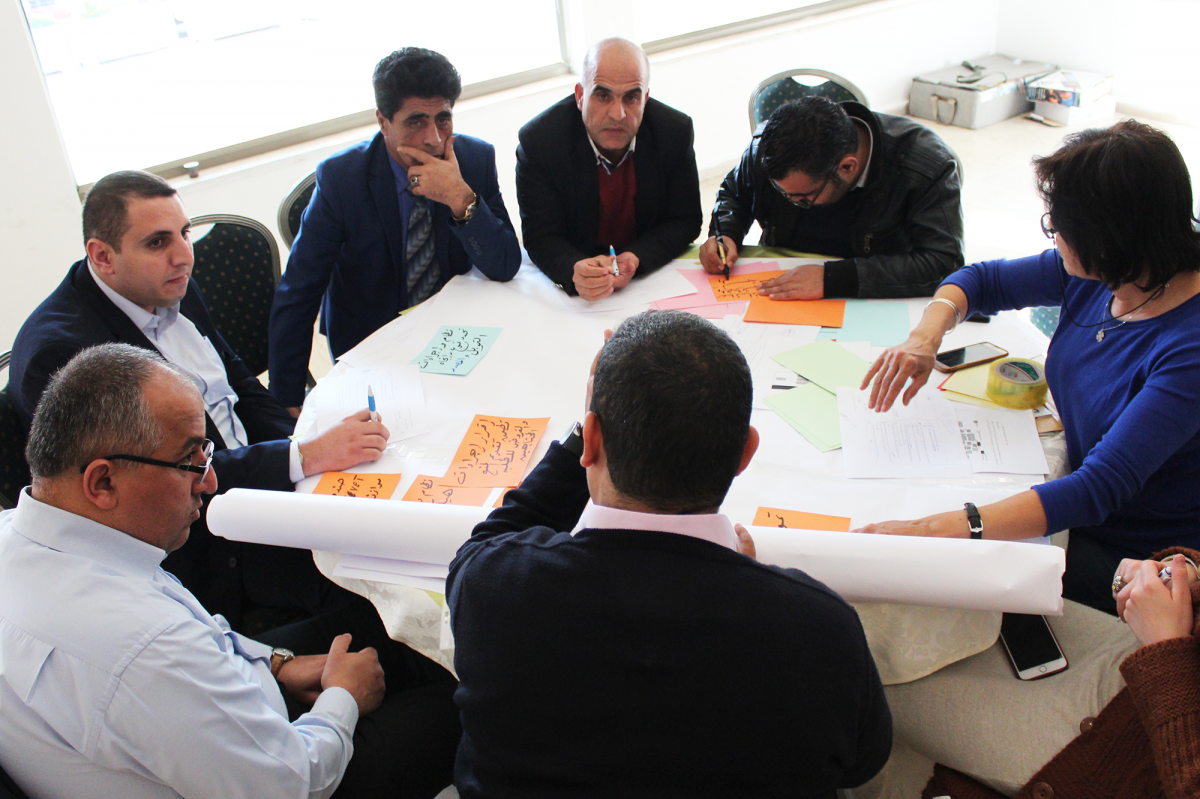
Work-Based Learning Strategic Plan Workshops
Laura SCHILLEMANS | 07/12/2017
On 28 and 29 November, the Belgian Development Agency organized two interactive and participatory workshops in Ramallah and Gaza to develop a Strategic Plan on Work-Based Learning (WBL). The goal of the workshops was to bring together all stakeholders: representatives from the Ministry of Education and Higher Education, Ministry of Labour, Ministry of Planning and Finance, Chambers of Commerce, Gender Units, Sector Federation, National Employment Councils, directors and coordinators of TVET institutions, NGOs and international actors active in TVET (GIZ, EU, IRPAL) and other social partners who contributed to the success of the ECIB WBL initiatives. During this workshop they could share their experiences, best practices and lessons learned from the 83 conducted Work-Based Learning initiatives in the West-Bank (including Jerusalem) and Gaza. After a series of analytical meetings and central and regional analyses, this final workshop culminated all efforts in order to complete the development of a national WBL strategy. The result of the workshops will be a reference document for all stakeholders on a national level, offering a clear strategy on how to institutionalize Work-Based Learning in Palestine in a sustainable way.
-
Involving master crafts persons for quality training
Hanna DEKERK | 06/12/2017
Sam Kasangaki is a man of many occupations : garage owner, tractor dealer, mechanic, chairman and training coordinator. He directs Farmer’s Engineering Solutions in Masindi, a garage where students from the surrounding Vocational Technical Institutes (VTIs) gain practical experience. Sam has been in the business for 25 years. At his garage students learn about welding, metal fabrication, electrical engineering and car maintenance. Throughout this year he had 60 students under his wings, coming from Kyema VTI in Masindi and Buhimba Technical College and St-Simon Peter Vocational Technical College in Hoima. As Sam is clearly a master of his craft, he participated in a master crafts persons training organized by the Belgian Technical Cooperation (BTC). “I learned many things”, he says, “How to handle students , organize their courses and foresee safety measures. It has improved our organization of trainings. ” Because Sam is also the chairman of the Ugandan Small Scale Industry Association (USSIA) in Masindi, he is trying to organize testing facilities in his garage so students can prove their practical experience through a USSIA certified worker’s PAS. This PAS stands for the Practically Acquired Skills of a profession and is also recognized by the Ugandan government. It can open doors for students who dropped out of school but have obtained professional skills in other ways. 20-year old Victor Muganyizi studies electrical engineering and knows why he is at Sam’s garage: “I came here because I will actually learn something. In other companies they sometimes can’t teach you anything”. The Support to Skilling Uganda project of BTC is supporting the pedagogical training of mastercrafts persons, while coaching students to upgrade their skills, together with instructors from VTIs.
-
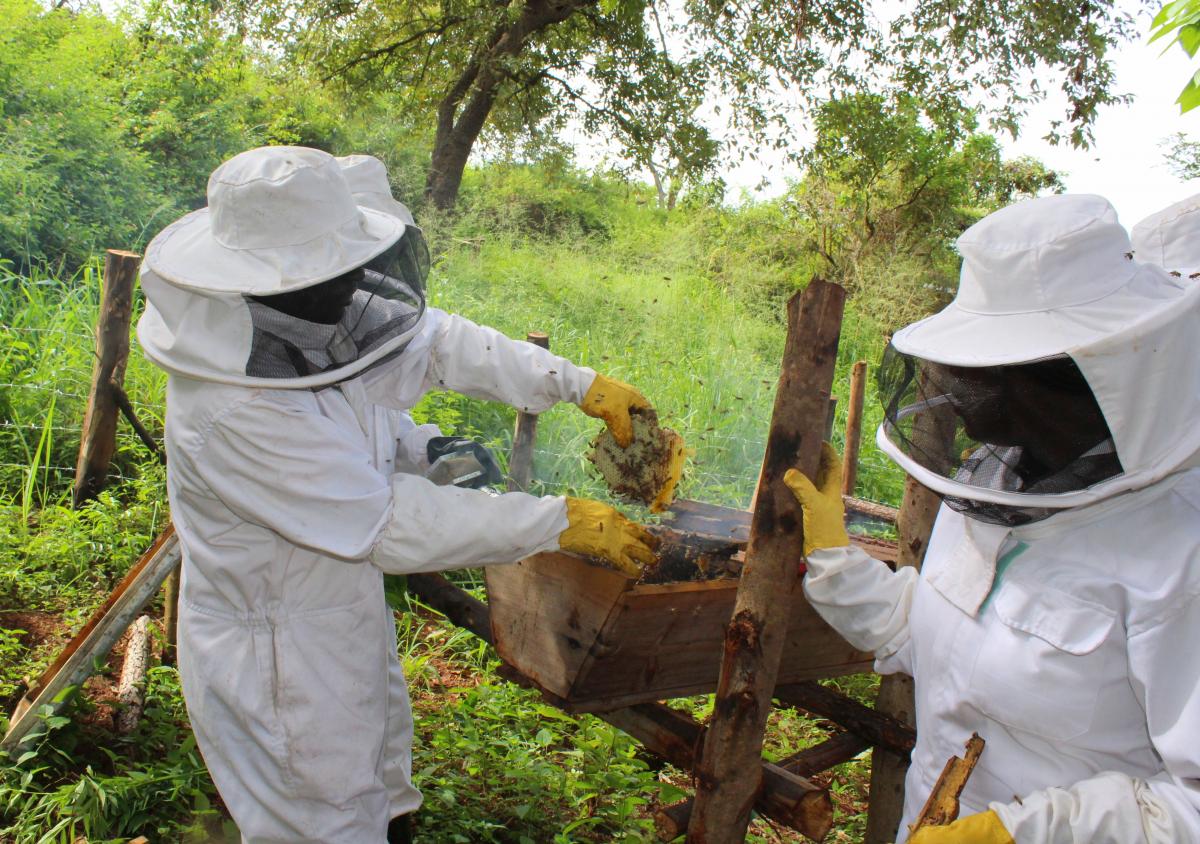
Making money from honey thanks to the Skills Development Fund
Hanna DEKERK | 05/12/2017
At the Nyabyeya Forestry College in Masindi, 136 students are following beekeeping courses. As most of them are enrolled fulltime in the forestry program, they consider beekeeping a class as any other. But not 20-year old Peace Nabuzale. She is one of the rare students trying to graduate as a professional beekeeper: “My fellow students seem to forget that it is bees which pollinate these forests.” The beekeeping program is one for busy bees. Students first learn how to construct a beehive and make a smoker, which is used to calm down the insects. They then practice how to take care of the bees and harvest their honey. Finally, students process products such as honey, bee wax candles and even propolis, a medicinal liquid. Peace enjoys the program, saying that she loves the opportunities of beekeeping. “With more bees, more flowers will get pollinated, which will increase the production. Thanks to bees you can get high yields from everyday flowers.” Lawrence Ayo, her instructor, affirms that the school’s honey and candles sell very fast. Bee products seem an underused source of income in the region. Thanks to the Skills Development Fund, master beekeepers from TUNADO (The Uganda National Apiculture Development Organisation) trained 11 of the school’s beekeeping instructors during a 10-day training. Lawrence is one of them: “I didn’t have the necessary practical skills because we mostly taught beekeeping from books. Now I can set an example for my students.” But it doesn’t stop there. The Skills Development Fund is also used to buy protective beekeeping suits for the students. Before, these were only available for the teachers, leaving students vulnerable to painful stings. As Ambrose Ahibisibwe, the vocational training coordinator of the college puts it: “It is no wonder that beekeeping was not a popular class. But now students can safely practice out in nature.” To reduce the threshold for beekeeping, students are taught to build hives from local materials such as elephant grass or reeds. This is cheaper than constructing one from timber and iron sheets. “We motivate our students to start beehives on their own, so they don’t become jobseekers but create jobs themselves. “, instructor Lawrence adds. Peace already has some hives at her house. “After my training, I want to help my father in developing our beekeeping business. He is getting too old for it.” The Skills Development Fund in Albertine-Rwenzori aims at sustainably improving the quality of technical and vocational trainings through public-private partnerships, in order to enhance the youth’s employability.
-
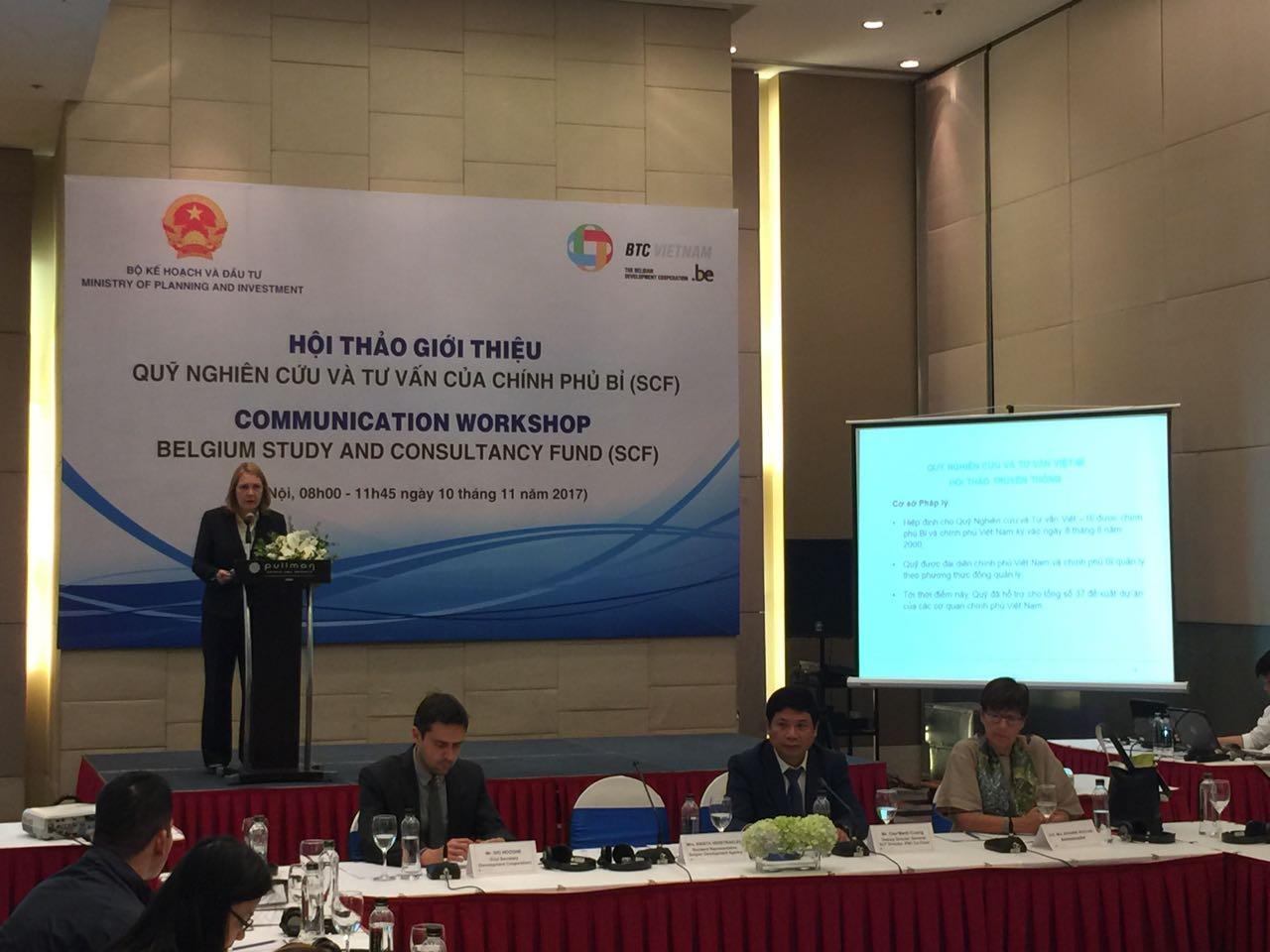
Communication workshop on Study and Consultancy Fund on 10/11/2017
Anh NGUYENNGOC | 29/11/2017
This successful workshop was co-chaired by MPI and BTC and it took place in the presence of the Belgian Ambassador and of the Head of the Development cooperation at the Embassy. The 60 participants from different Ministries, Government Institutions, Universities and Provincial Departments, received detailed explanations about the Objectives of the Fund and about the requirements and procedures for introduction of proposals. The workshop was marked by a very interesting session of Q& A’s. The SCF is preparing now for the handling of the final round of project proposals, before the final closure of the Fund.
-
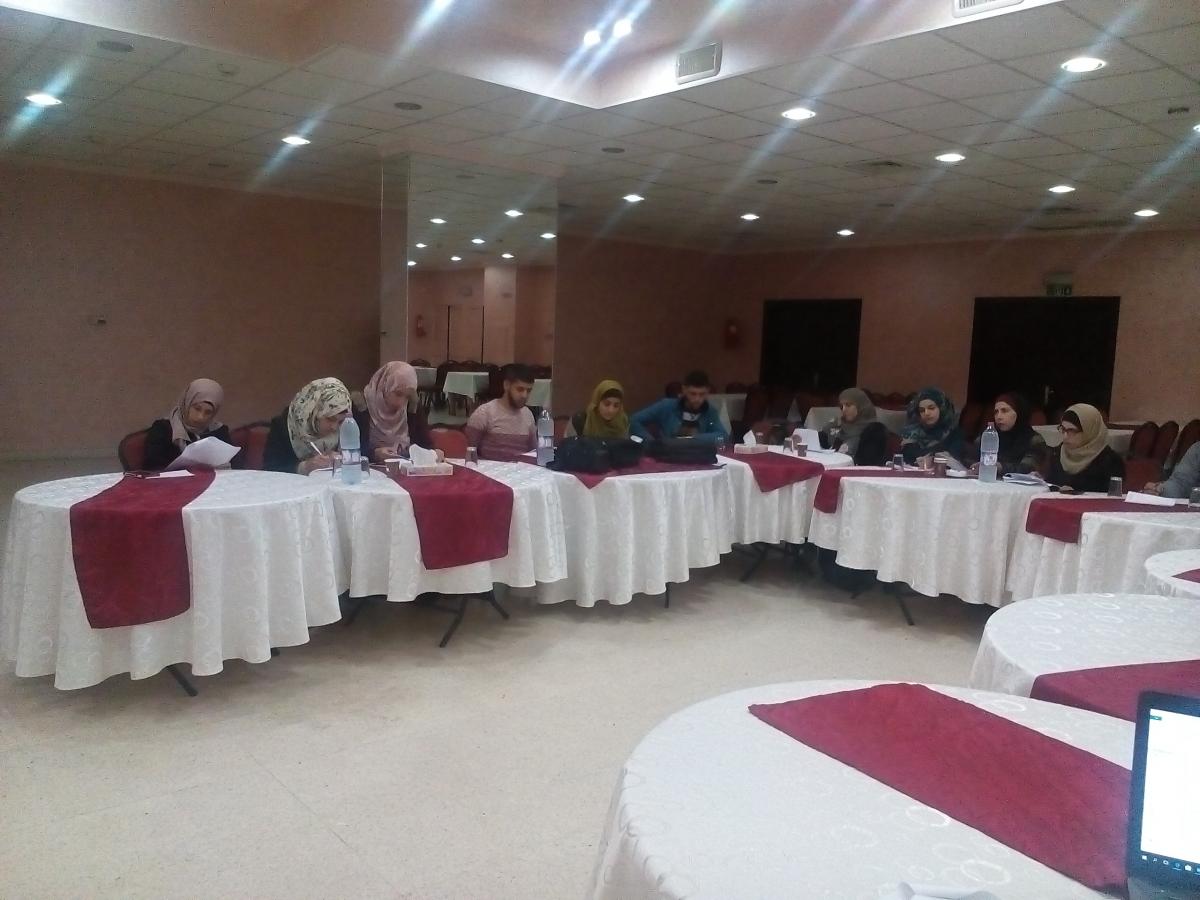
Training of graduates to conduct public surveys to evaluate BTC's projects
Laura SCHILLEMANS | 27/11/2017
The Belgian Development Agency is preparing a public survey to assess the citizens’ perception about the changes brought by the LGRDP (Local Government Reform and Development Program) and RHC (Regeneration of Historic Centers) projects. The results of the survey, that will be finalized by March 2018, will serve as a guidance for future interventions. Newly graduated students, from the targeted localities, are being trained by consultants to conduct the interviews. They are learning how to conduct a survey and how to analyze the collected data. This way they will have the opportunity to gain field experience. Nehal Barghothi from the village of Abbood is one of the trainees. She recently graduated from the Al-Quds Open University and she said that her participation is the perfect opportunity to improve her skills, experience, work proficiency and economic status. “This type of work will help me build relations with members of society and it will provide me with additional skills for the labor market.”
-
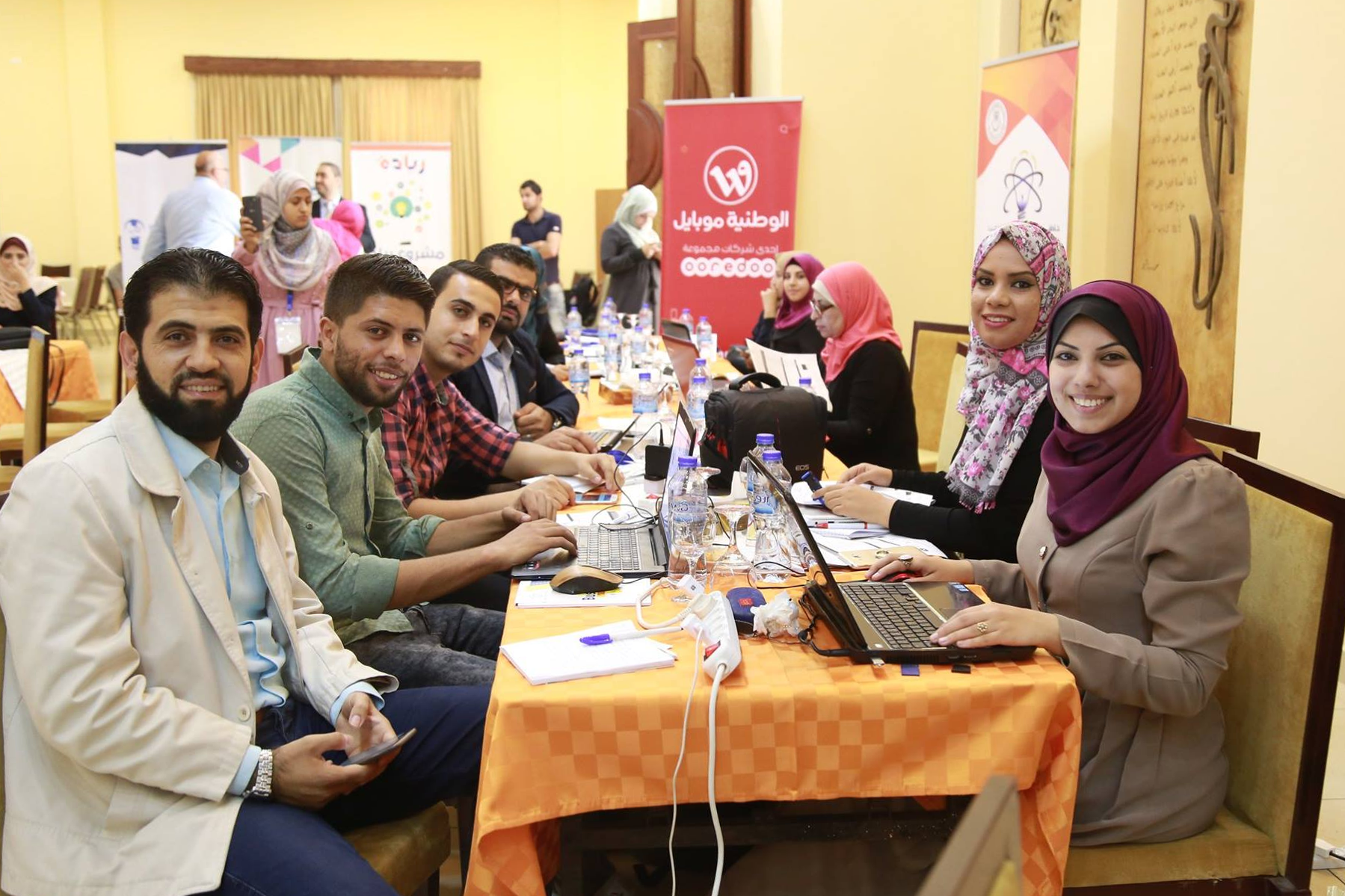
Entrepreneurship Awareness and Boot Camps in Gaza
Laura SCHILLEMANS | 27/11/2017
The Business Startups Incubators Support (BSIS) Project in Palestine, funded by EU and implemented by the Belgian Development Agency (BTC), organized “Entrepreneurship Awareness and Boot Camps” at the Business and Technology Incubator of the Islamic University in Gaza. The objective was to increase the interest in entrepreneurship among potential entrepreneurs by demonstrating the economic, social and psychological rewards of entrepreneurship. Each awareness session included a Q&A session with local entrepreneurs who already launched their own start-up. This way the participants got familiar with the challenges and rewards related to entrepreneurship. The participants also got to know more about the services BSIS offers to entrepreneurs. The awareness sessions were followed by two-day Boot Camps. The Boot Camps aimed at encouraging team work and stimulating idea generation. The trainer illustrated the process of idea development through a brainstorming session with the participants. The participants were divided into multi-disciplinary teams and each team was requested to brainstorm about an idea and pitch it to the other groups. Afterwards the groups had to vote for their favorite idea. The best pitching teams were selected to attend an intensive “Start up your business training” which will be announced soon. Discover more about the Boot Camps in the following videos: http://ow.ly/D30b30gPMQ4 & http://ow.ly/G0Oj30gPMV8
-
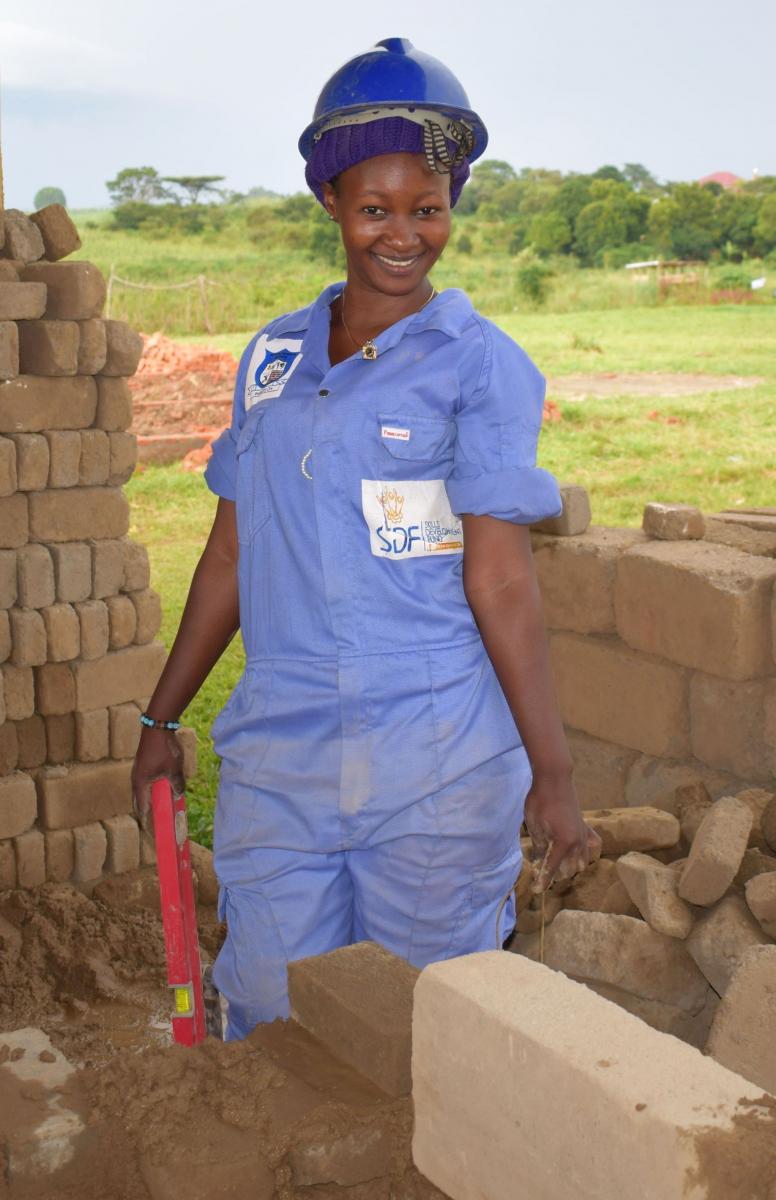
Skills Development Fund builds construction training
Hanna DEKERK | 21/11/2017
At 6pm trainees of the Building and Construction training at Buhimba Technical College in Hoima are still rehearsing their brick-laying skills. “We keep practicing because we all want to succeed our exam.”, says Claire Murungi, one of the 30 trainees subsidized by the Skills Development Fund (SDF) of BTC’s Support to Skilling Uganda project.Claire is the only girl in her community to pursue a career in construction. “I feel proud to take this class. I want to show that girls can also build.” Her fellow student, Michael Barongo, agrees that the collaboration between the 20 boys and 10 girls in the training is going well. “Girls are capable to do jobs that are done by men.”, he adds. Michael enrolled in the training after hearing about it on the local radio. “I admired builders. Especially after I worked as a porter at a construction site.” The SDF-subsidized Building and Construction training takes 6 months in total, including one month of industrial placement at a private company. Entrepreneurship classes are part of the program, and aim at motivating trainees to start their own businesses. Michael is already on board: “After the training I want to start a small company with my fellow students and employ people from my community.“ Classes are given by Daniel Esong, an engineer with 8 years of experience at multiple international construction companies. “My work here is to demonstrate building techniques and to assist students during practice. I also inform them on safety in the workplace and on HIV-awareness. I try to guide and council them.” He adds that the Skills development allowed the Buhimba College to provide safety gear for the trainees (such as overalls, helmet and gumboots) as well as working equipment (such as trowels and spirit levels). To upskill him with modern drawing techniques, he received an architectural design training on the ArchiCad modeling software.The Skills Development Fund in Albertine-Rwenzori aims at sustainably improving the quality of technical and vocational trainings through public-private partnerships, in order to enhance the youth’s employability.
-
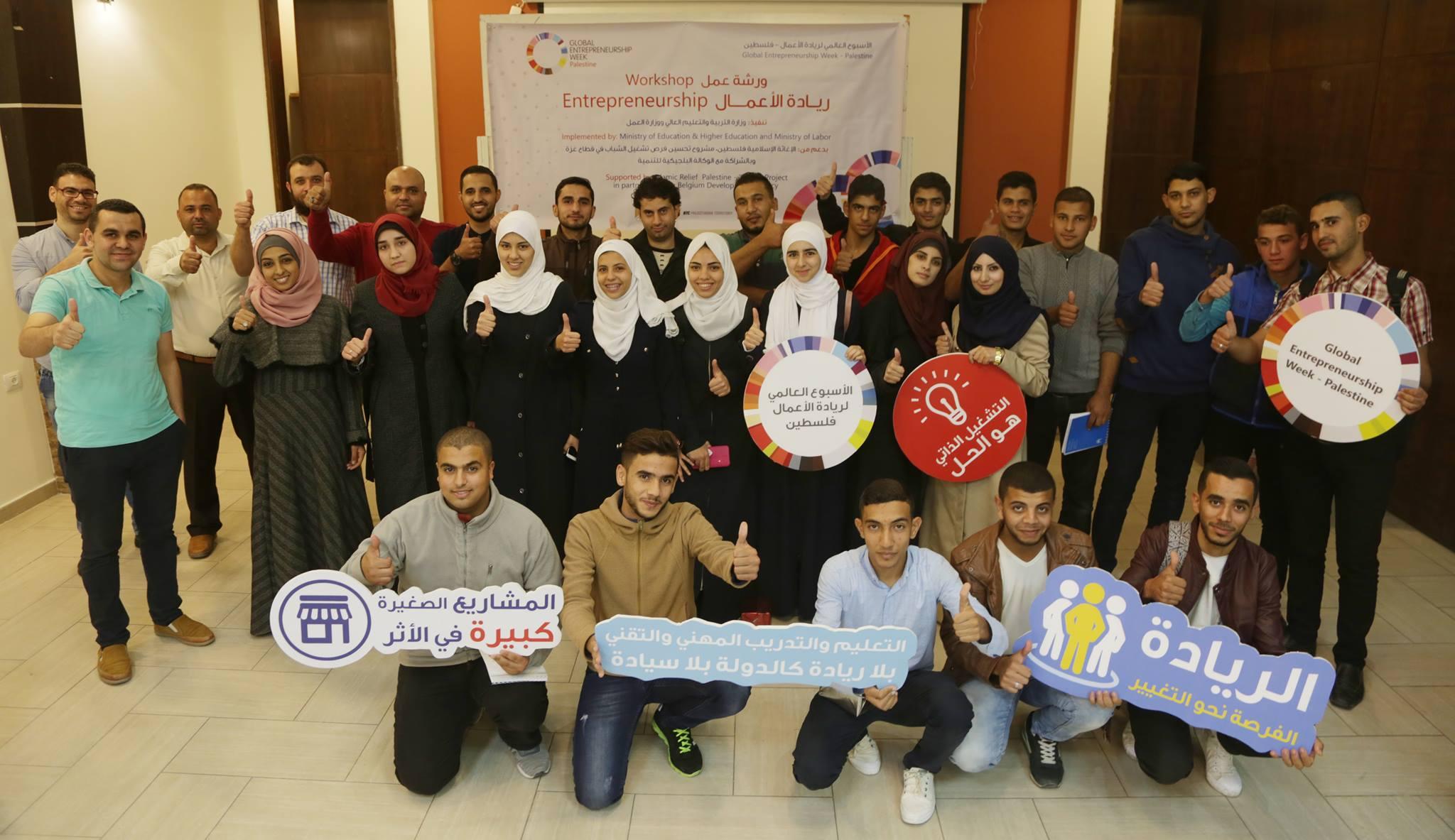
Global Entrepreneurship week in Palestine
Laura SCHILLEMANS | 20/11/2017
Islamic Relief Palestine and the Belgian Development Agency organized an advocacy event named “To be the change… Towards Entrepreneurship”, in coordination with the Ministry of Education and Higher Education (MoEHE) and the Ministry of Labor (MoL). The event aimed at providing a group of TVET students and graduates with the needed entrepreneurial competencies and to enable them to advocate to decision makers to integrate an entrepreneurial culture in the TVET system. The 2 day entrepreneurship workshop taught the students and graduates more about the concept of entrepreneurship and it made them aware about the importance of entrepreneurship in TVET, as a promising road to employment. The workshop resulted in 4 initiatives, focusing on four critical issues and proposals to integrate entrepreneurship in the TVET system, which were designed and presented by the 24 participants. The four initiatives will be used as advocacy initiatives towards the MoEHE and the MoL to ensure their commitment towards adopting an entrepreneurial culture in the TVET system.
-
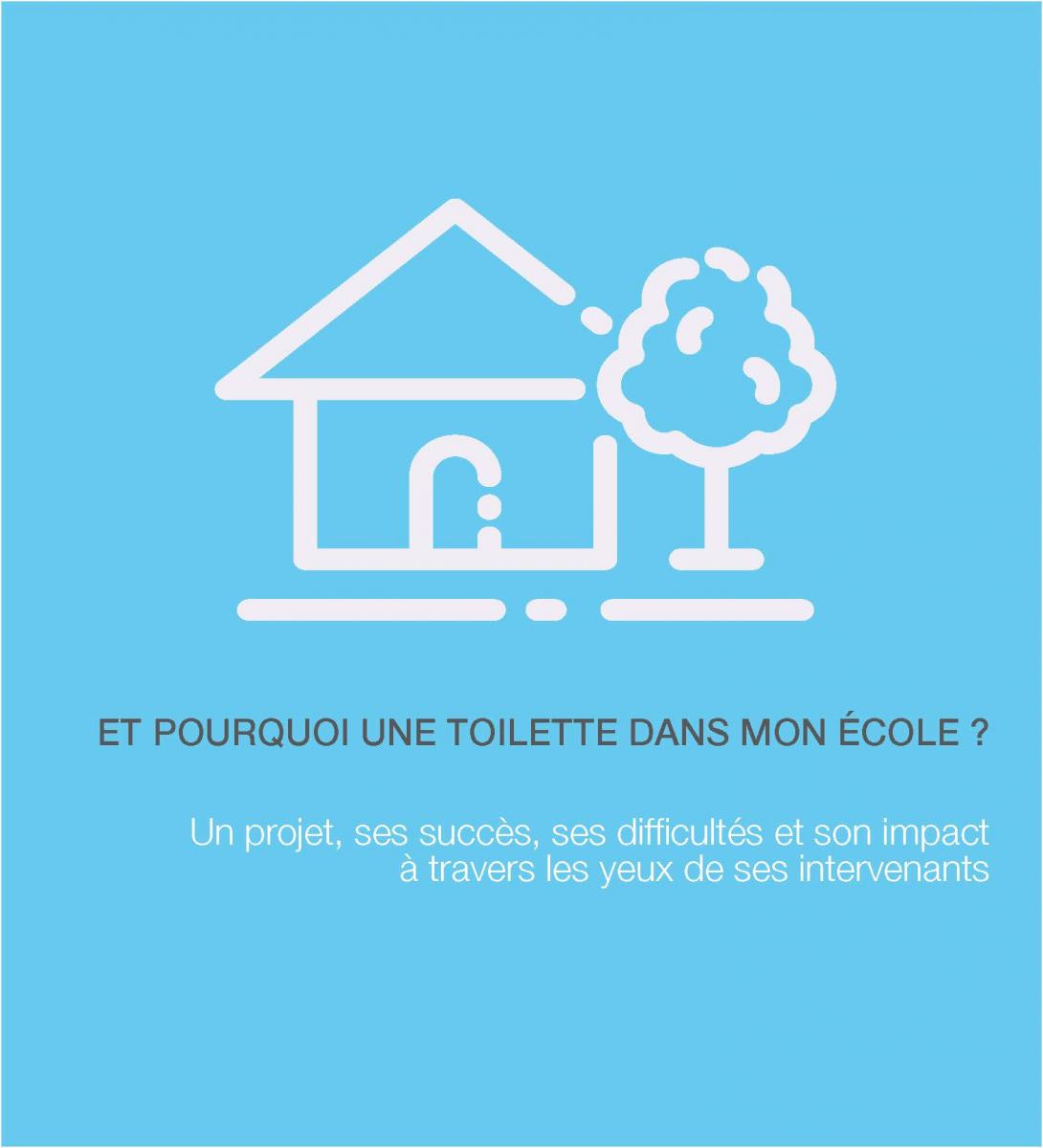
Et pourquoi une toilette dans mon école ?
Meriem HILALI | 20/11/2017
Au Maroc, la majorité des écoles rurales sont souvent sous-équipées et sont dépourvues notamment d’eau potable et de système d’assainissement. À peine 50% des écoles ont accès à des infrastructures sanitaires. En 2010, la coopération belge a fourni son appui au projet national de mise à niveau environnementale des écoles rurales en visant la réhabilitation de 250 écoles. Le projet visait l’amélioration des conditions de vie des élèves à travers la mise en place d’infrastructures sanitaires dans les écoles et la sensibilisation des enfants à l’importance de l’hygiène et de l’environnement. En améliorant durablement le cadre de vie des écoles et des villages, le projet visait aussi particulièrement à enrayer la déperdition scolaire des jeunes filles. Aujourd’hui, à la clôture de ce projet et après de nombreux défis, 190 écoles dans les régions de Taroudant, Taliouine, Zagora et Tinghir ont bénéficié de l’intervention et beaucoup de belles histoires se sont déroulées. Quelques-unes se retrouvent dans les pages suivantes... https://goo.gl/SYCDHX
-
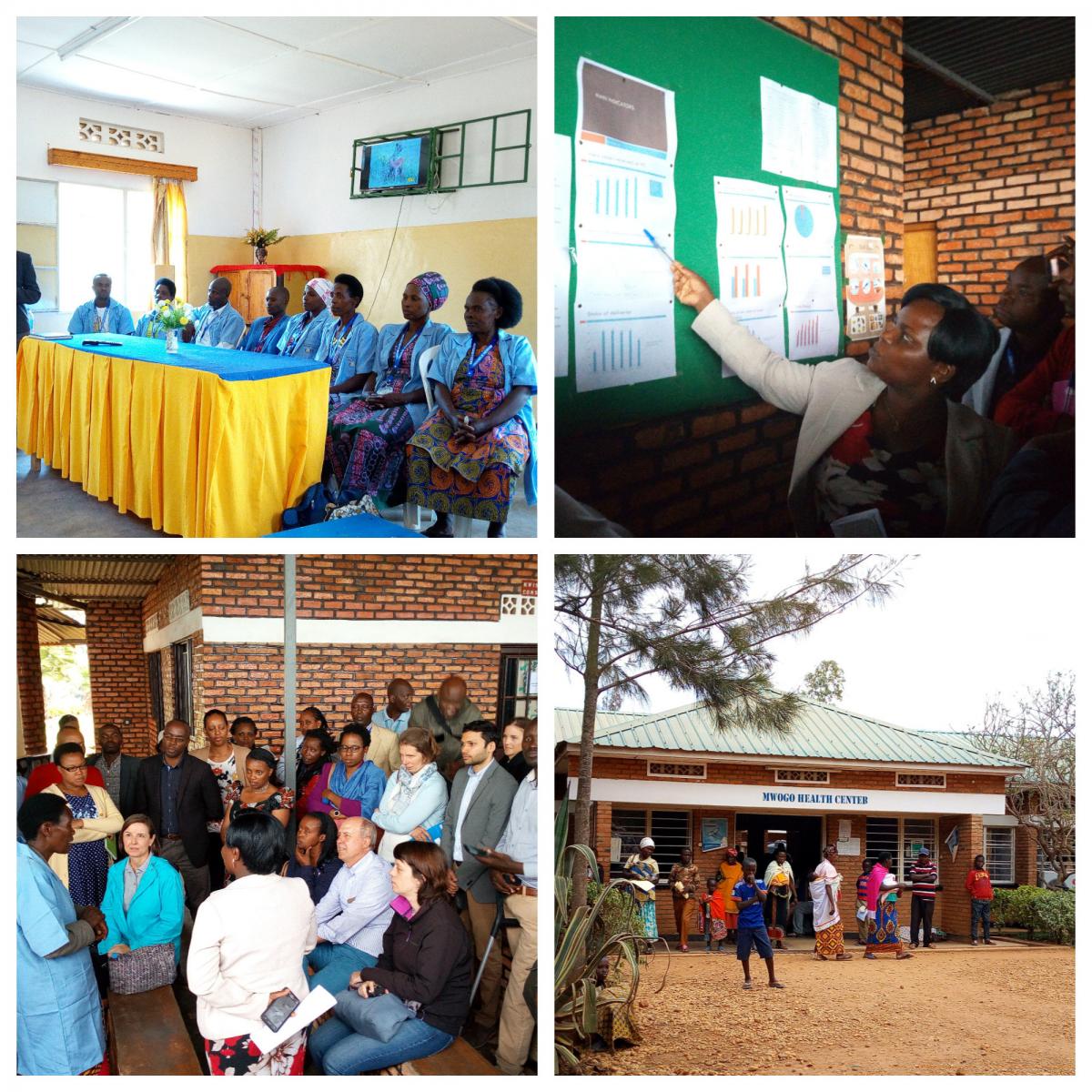
Health Sector Working Group Field Visits
Alexis DE HERDE | 20/11/2017
Between 24th and 26th October members of the Health Sector Working Group, including BTC and the Embassy of Belgium, conducted joint field visits to the Districts of Nyabihu, Gicumbi and Bugesera with a special focus on Family Planning, Nutrition and Hygiene.The visits were led by the Director General of Planning, Health Financing and Information Systems of the Ministry of Health. Bilateral and multilateral development partners as well as civil society organisations participated in high numbers. In each district, the local authorities presented the district health profile as well as achievements, challenges and good practices in the chosen topics and in other areas such as maternal health, malaria and community-based health insurance (mutuelles de santé). Discussions were followed by on-site visits to health facilities and Community Health Workers' cooperatives where participants were briefed on key services provided.Family planning and Youth Friendly Corners In the area of family planning for example, participants were briefed about the youth friendly corners set up in some health facilities where adolescents can receive counselling on sexual and reproductive health and family planning methods. The Demographic and Health Survey of 2014/15 found that 7% of girls between 15 – 19 years of age had begun childbearing (i.e. being pregnant or having given birth to a child) which was a slight increase from the 6% shown in the previous survey (2010). A number of cultural barriers with regard to access to services for the youth remain but the government is committed to addressing the issue and has been calling upon various stakeholders, starting from the household level, to take more responsibility for sensitising the youth in order to avoid unwanted pregnancies while scaling up access to services in facilities as well.Addressing malnutritionInterventions to address chronic malnutrition (also known as ‘stunting’ which is defined as low height-for-age) have been stepped up in some districts with the support of development partners. One particular case is the district of Nyabihu, which benefits from high agricultural productivity and supplies food to many parts of the country yet faces the highest rate of stunting affecting 59% of children under the age of 5 according to the 2014/15 Demographic and Health Survey (while the national average stood at 38%). Again, the government is addressing these challenges which among other things requires changing mindsets and promoting better and more diversified eating practices.Peer to Peer Learning Opportunities The field visits are highly valued by development partners as they provide an excellent opportunity to take stock of strides being made at different levels of the health system and to appreciate the commitments of the local authorities in delivering quality health care. The visits offer a space for peer-to-peer learning between stakeholders working at the policy level and health care providers on the ground and are seen as an important tool to inform and strengthen policy dialogue. Findings from the field visits are presented at the Joint Health Sector Review, which is a semi-annual forum chaired by the Permanent Secretary of the Ministry of Health .Health, a priority sector for Belgium Belgium has been a long-standing partner of the health sector in Rwanda. BTC currently supports a variety of interventions in close collaboration with the Government of Rwanda, namely through:i) sector budget support;ii) a capacity development pooled fund to strengthen human resources for health ;iii) the Ubuzima Burambye (‘Long healthy life’) institutional support programme which focuses on leadership and governance, quality of health care, urban health, mental health and maintenance of medical equipment and infrastructure.
-
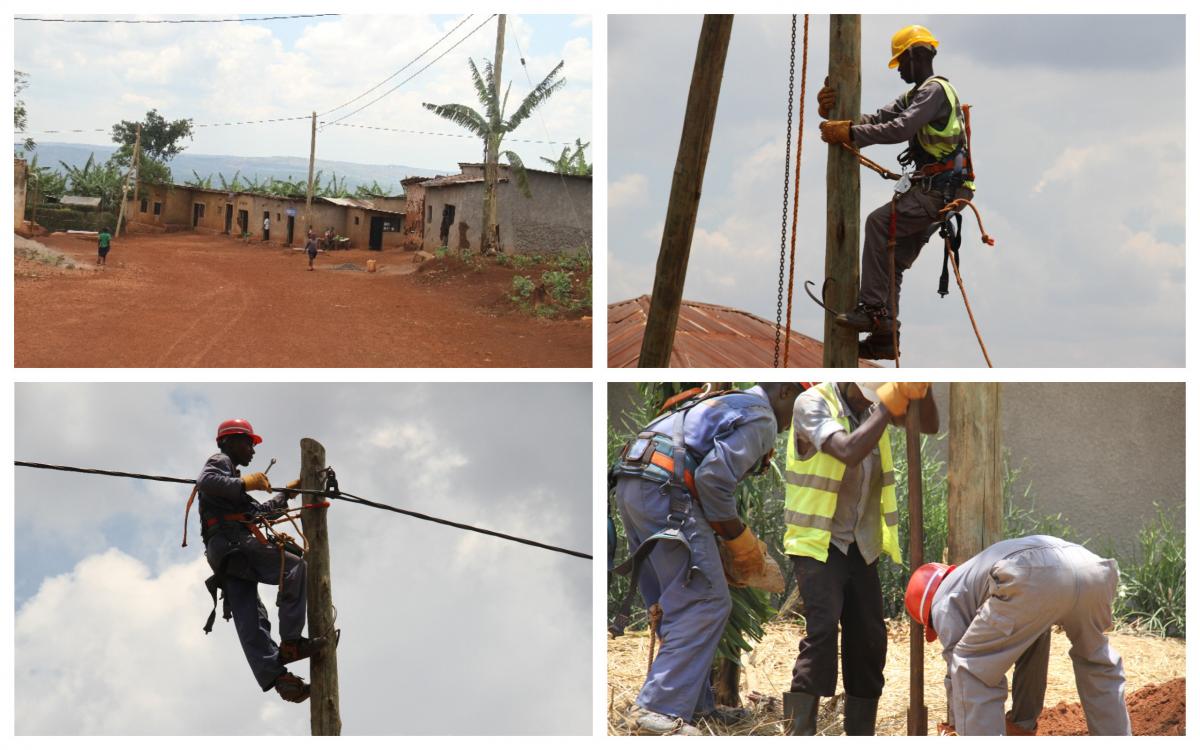
Electrification in Rwamagana
Alexis DE HERDE | 20/11/2017
“We have set our targets but we will have to stretch them in the future. Our general target is to connect all Rwandans by 2024” said recently the CEO of Rwanda Energy Group, Eng. Ron Weiss.Access to electricity in Rwanda is one of the key targeted development boosters of the Government. The current target, dubbed 7-5-2, stipulates a 100% access to electricity in Rwanda in 7 years while this percentage will be reached in Kigali City in only 2 years and in all productive use centres (health centres, schools, handcraft centres, markets, etc.) in 5 years.BTC is one of the main development partners supporting the Government of Rwanda to meet these targets. The support is channelled through the Electricity Access Rollout Program, EARP, a program based in EDCL, a Rwanda Energy Group subsidiary company in charge of Energy Development.Through 2 consecutive projects, namely BE-EARP1 and BE-EARP2, BTC is intending to provide access 20,340 households in the Eastern Province. Currently, 36.5% of households in the Eastern Province have access to electricity, including 24.5% connected to the national grid and 12% using off-grid solutions. Through a Tunisian contracting company - STEG - under the BE-EARP project, 8104 households are currently being connected to electricity. Stringing works and transformers installation are preceding the last step to connect house after house.Residents of Munyaga Sector, one of the 7 sectors to be electrified in Rwamagana District, welcomed this electrification project saying that it will enable them to start various businesses such as hairdressing, milling and welding.
-
Skills Development Fund uplifts welding training
Hanna DEKERK | 20/11/2017
With meticulous concentration students are welding doors and windows at the St-Simon Peter Vocational Training Centre in Hoima. Here, the Skills development Fund (SDF) of the Support to Skilling Uganda project subsidizes a 9-month basic welding and metal fabrication program for 18 trainees. 20-year old Grace Kemigisa is one of them. “This training teaches me the importance of practical skills.” After Grace’s father died, her mother was unable to pay her university fees. So when Grace learned through the local radio of the SDF-subsidized trainings at St-Simon Peter, she applied. “Before I was trying to study Business Administration to find a white-collar job. But this training has changed my attitude. With practical skills you can find work much faster.” 12 out of the 18 trainees are girls, which is remarkable as welding is generally a male-dominated profession. The SDF-trainings aim for gender equality by targeting at least 30% enrolment of girls. The 9 month-training will earn Grace a Worker’s Pass, provided by the Ugandan Directorate of Industrial Training. This certificate shall prove her skills countrywide. After graduation, Grace wants to work in the oil-and gas industry. She and her fellow students already gained practical experience during a two-month industrial training at the Bwendero Dairy farm, as part of their 9-month basic welding and metal fabrication training. This makes them more confident to take the tests for the companies that recruit for the oil-and gas industry. The SDF subsidizes an additional 6 trainees in Motor Vehicle body works, plus 6 more in motorcycle repair. According to Program Coordinator Muhumuza Emmanuel “The SDF has really benefited these trainings. It enabled us to buy a compressor to paint vehicles and provided trainees with personal protective wear. With the high demand for mechanics to repair motorcycles in the Hoima District, our graduates won’t stay unemployed after their training.” The Skills Development Fund in Albertine-Rwenzori aims at sustainably improving the quality of technical and vocational trainings through public-private partnerships, in order to enhance the youth’s employability.
-

Le Programme de Désenclavement au Kasaï-Oriental et au Lomami: fer de lance pour booster l’agriculture et la dynamisation du secteur
Julie CLAASSENS | 14/11/2017
Le PRODEKOR, dont l’objectif global consiste au désenclavement des bassins de production en vue d’une relance de l’agriculture et d’une sécurité alimentaire, a comme objectif spécifique la mise en place d’un réseau multimodal praticable en toutes saisons et entretenu par des structures locales. D’un budget global de 20 million d’euros, le programme intervient au niveau des infrastructures, mais aussi pour un renforcement institutionnel des services étatiques et une participation citoyenne dans les activités de développement avec une approche fondée sur la résilience. Les actions de renforcement institutionnel et d’appui structurel avec la démarche du ‘faire-faire’ par les services étatiques au niveau des provinces et des territoires, tenant compte de la décentralisation, pour l’accomplissement d’un contrat social entre l’état et la population par une approche fondée sur les droits, ont contribué à la fourniture d’un service de proximité de meilleure qualité avec un renforcement de la maîtrise d’ouvrage provinciale et une légitimité des pouvoirs publics.Les réalisations du PRODEKOR ont permis d’appuyer l’émergence et la consolidation de près de 80 entreprises privées comme des structures de réhabilitation et des PME de construction, …etc. En outre, les actions ont permis la professionnalisation de 7 Coordinations des Comités Locaux d’Entretien des Routes (COORDICLER), qui sont outillées pour participer aux travaux et pouvant permettre l’instauration d’un partenariat public-privé. Ainsi, cet appui a permis la création de près de 15 700 emplois, dont 5200 pour les travaux temporaires en HIMO et 10 500 pour les travaux réguliers d’entretien des pistes.Le programme compte à son actif la réhabilitation de près de 500 km de routes, l’aménagement de 9 ponts, l’entretien de près de 1 500 km, la construction de 21 dalots et de 10 buses ARMCO. Les travaux d’aménagement de près de 130 km de voie d’eau entre le port Ndomba et Lusambo (dont les travaux ont démarré durant le mois d’octobre), pour assurer la multi modalité du transport entre Kinshasa et les provinces du Kasaï-Oriental, de la Lomami et du Sankuru. Ces actions sont complétées par des interventions au niveau des bacs. Avec la construction/réhabilitation de 5 bacs, le PRODEKOR participe activement au désenclavement des populations des 3 Provinces. Concernant le thème Genre, le PRODEKOR a mis en œuvre des activités pour un renforcement du leadership féminin, ayant touchés près de 250 femmes par un renforcement de l’autonomisation des femmes, l’alphabétisation fonctionnelle, des appuis aux initiatives féminines face aux violences sexuelles et le renforcement de la sororité. Les activités dans le domaine de l’Environnement, avec des appuis aux communautés pour une résilience face aux changements climatiques ont permis la formation de 72 pépiniéristes, l’aménagement de 30 sites de reboisement et la transplantation de près de 130 hectares.
-
Le Kasaï Oriental et le Lomami, deux provinces productrices d’huile de palme demain?
Julie CLAASSENS | 14/11/2017
Les perspectives s'annoncent bonnes, depuis que l'Agence Belge de Développement, CTB RD Congo, à travers le programme d'appui au développement agricole du Kasaï Oriental, PRODAKOR, s'est impliqué dans la promotion de la culture du palmier à huile.En effet, le palmier à huile est l'une des cultures retenues comme prioritaire par les populations de cette partie de la République Démocratique du Congo. C'est ainsi qu'avec le début des activités du programme, l'appui à la filière palmier à huile a démarré, avec l'objectif d'atteindre près de 3000 hectares au bout de 5 années de travail.Dès 2014, une série de commandes des graines pré germées de palmier à huile Tenera, de variété Cirad, a été faite, après une procédure de passation des marchés publics, auprès de l'entreprise PALMELIT installée au Bénin. De ces graines, plusieurs petites pépinières ont été installées dans les villages, afin de produire des plants sains qui devaient être achetés par les petits exploitants agricoles intéressés, afin de leur permettre de réaliser leurs petites plantations.C'est ainsi qu’entre 2014 et 2017, 270 000 graines ont été commandées. Les plants issus des pépinières réalisées en 2014 et 2015 ont permis de réaliser près de 961 hectares, dont 491 hectares dans le Kasaï Oriental et 470 hectares dans le Lomami. Il s'agit des milliers des petites plantations individuelles réalisées par 2662 planteurs avec près de 137 405 plants de palmier à huile. En cette année 2017, il y a 448 pépinières villageoises qui ont été installées et qui contiennent actuellement 129 962 plants en plein développement. Ces plants pourront servir à emblaver environ 908 hectares, avec une moyenne de 143 plants par hectare.Les premiers palmiers améliorés plantés commenceront à entrer en grande production en 2020, avec une phase de démarrage à partir de 2018. Cette entrée en production aidera les petits agriculteurs à améliorer leurs revenus, issus des activités agricoles, dans le respect des normes environnementales, car le palmier à huile pourra produire pendant que les cultures vivrières seront encore en végétation et donc pendant la période où les agriculteurs n'ont généralement pas assez de revenus.Un calcul rapide a été fait sur base des informations sur la production fournies par PALMELIT et obtenues également du marché local sur le prix de vente de l'huile de palme. Il apparaît que pour un agriculteur qui possède une petite plantation de 10 palmiers, il peut améliorer son revenu de 11 USD par mois, issu de la vente de 23 litres d'huile produite par ces 10 palmiers.Une enquête réalisée en 2014 sur les revenus des agriculteurs de cette contrée a montré que le revenu de 63 % des agriculteurs ne dépassait pas 50 USD par mois. Pour cette catégorie d'agriculteurs, ajouter à leurs revenus environ 11 USD chaque mois n'est pas négligeable. Si l'agriculteur a une plantation d'un hectare, alors son revenu peut augmenter de 165 USD chaque mois.Le défi qui reste à affronter dans cette activité est celui de continuer à fournir des plants sains aux agriculteurs à partir de l'INERA Yangambi, car même les palmiers CIRAD sont produits à partir de souches venues de Yangambi. Nous espérons que cette station sera en mesure de fournir les quantités qui seront demandées par les planteurs.Le futur s’annonce donc prometteur pour que les provinces du Kasaï Oriental et du Lomami soient comptées demain, comme des provinces productrices d'huile de palme, car ce palmier Tenera, de la variété CIRAD peut produire pendant 22 ans. L'environnement naturel de ces deux provinces s'y prête, avec des vastes savanes inexploitées, dans lesquelles le palmier à huile est souvent le principal arbre de manière spontanée.
-
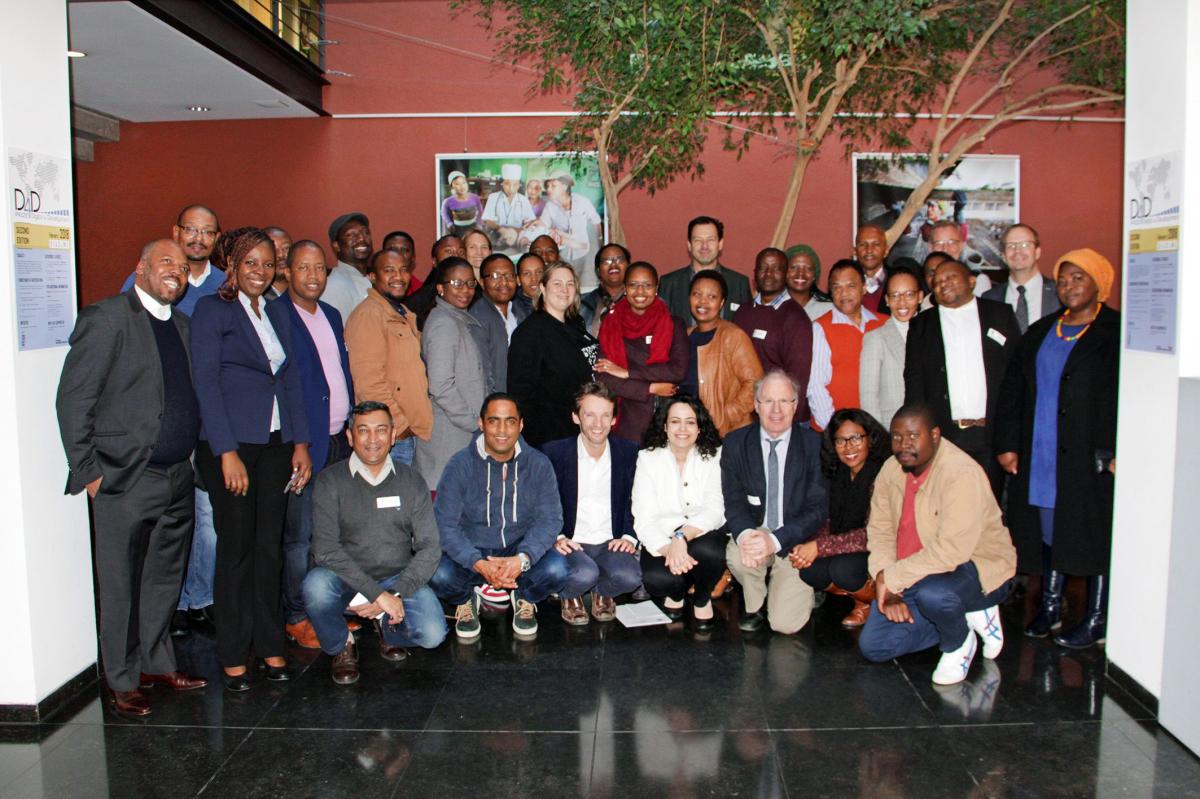
Exchange between South African Ministry of Finance and Universities on Public Financing Management (PFM)
Princia BAZABIDILA-MONASSALA | 13/11/2017
On Friday 20 October 2017, thirty Directors of South Africa’s Ministry of Finance, mostly from the National Treasury, visited BTC on the last day of their training session on Public Financing Management for a review of the training session. This Brussels study tour from 7 to 22 October 2017 was financed by the Studies Fund. It included a one-day visit (13 October) to the OECD in Paris. The study tour was organised by BTC in collaboration with the VUB and the University of Antwerp. It concerns a professional continued training exchange programme in Belgium and South Africa for civil servants of the National Treasury, of sector departments and of municipalities. For two weeks, the participants worked intensively with Professor Jacques Vanneste , who teaches Economics at the University of Antwerp, and with Professor Claeys , who teaches at the VUB in Brussels. The participants were satisfied with the training content and the exchanges. They will attend a second training session in Pretoria from 20 to 24 November 2017, which will eventually lead to certification.
